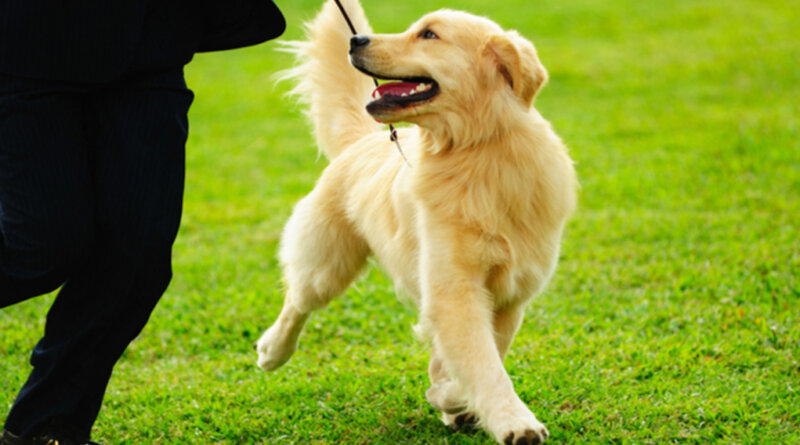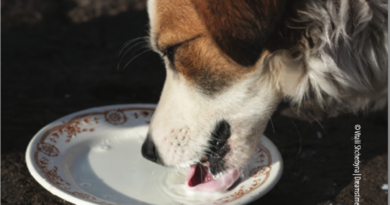Becoming a Show Dog: A Beginner’s Guide on How to Get Started
Do you think your fido has the potential to be a show dog that can rack up records?
Then competing on a dog show is worth considering.
But it can be pretty daunting to enter a show as a newbie when others got the know-how.
But worry no more, we got your back.
In this article, we’ll discuss:
- What a dog show is for and how it works
- How can your dog qualify for the show
- How to groom your dog for success
If you want to get your dog ready for the show ring and see the beauty and glamour of a dog show, this post is for you.
What is a Show Dog?
A show dog refers to any dog that enters a show designed for canines.
It could be from any breed, from Golden Retriever to Bulldogs to Huskies.
Most show dogs are trained and groomed to minimize their flaws and maximize their abilities, skills, and potentials.
What Is the Purpose of Dog Shows?
Most people compare dog shows to a “beauty pageant.”
While both shows share similarities, judges don’t compare canines with each other in a dog show.
But instead, they’re being compared with their breed’s standard and measured by how close they are to it.
Its primary purpose is to evaluate breeding stocks and select winners based on their ability to pass good genes and contribute to future generations of dogs.
These events, in turn, can help maintain the integrity of the breed.
That’s why the official term for dog shows is “conformation shows or trials.”
How Does Dog Show Works?
Purebred dogs are presented in a conformation show by a handler.
The handler can either be the owner of the dog or not.
Most show dog owners hire a professional handler who will train and help their dog look its best.
The dogs will then be judged by purebred dog experts based on their structure, gait, movement, and temperament.
The champions in this type of show are considered better breeding stock because they are proven ideal specimens of their breed.
As a result, their offspring typically have a higher monetary value.
Because the closer the dog’s appearance is to the standard of its particular breed, the higher the chances are that it can produce puppies that meet the standard.
That’s why mixed-breeds and spayed or neutered purebreds are not qualified to compete on dog shows.
Types of Dog shows:
Conformation shoes typically have two types, the benched and the unbenched.
1. Benched show
It’s a must to keep your puppy at its bench spot in a benched show from the start to the end of the show.
Your show dog can only leave her bench during the potty breaks and when it is exhibited in the show ring.
It can be exhausting for you and your pup. Good thing, most dog shows today are unbenched.
One of the benched shows in the US is the Westminster Kennel Club show.
2. Unbenched show
At an unbenched show, you’re free to show up in time to groom your pet for the exhibition event and go home if you’re finished showing your dog.
You can also stay to watch the group and best in show judging if you want.
All you need in this type of show are the time of your pup’s exhibition and the ring number in your judging schedule.
Getting Started with Dog Shows
If you want to get your dog into the conformation world, here are some tips on how to get started:
Attend a show in person
One of the best ways to be familiar with dog shows is attending one in person.
It can help you know what happens in a show ring and witness the sportsmanship and camaraderie between spectators and exhibitors or handlers.
It can also help you decide whether to present your dog by yourself or hire a professional handler.
Register with the club near you
You can’t just enter a show without registering your pup into the club you’re joining at.
So better get a registration form from your pup’s breeder.
Clubs like AKC don’t just host the conformation events, but they also offer invaluable resources and training classes.
You can meet many people who share the same interest as you and lend their hand and knowledge.
Requirements for Dog Shows
For your dog to be eligible in a dog show, they must be:
- Six months or older on the day of the conformation trial
- Registered and recognized breed with the AKC or any club you’re attending to
- Not spayed or neutered
- In sound health and vaccinated regularly
- Free from disqualifying faults as stated by the breed’s parent organization
How To Prepare Yourself and Your Dog for a Show
Match shows sanctioned by the AKC, and your local kennel club offers an opportunity to learn something new about the sport.
A match show is a dress rehearsal before entering the first real show.
It’d be best to watch as many match shows as you can for the experience.
Local clubs and training groups also hold fun matches.
AKC does not sanction them, but they can help prepare your show dog for its upcoming competition.
Here’s what you need to do to make sure your dog is ready for the show.
Look for a Mentor
You don’t have to worry if you have no experience in any conformation show because many knowledgeable people can help you.
BREEDERS
If you already have a purebred dog, an excellent place to start looking for a mentor is the breeder where you got your fido.
KENNEL CLUBS
You can also inquire from nationally-based parent clubs or local all-breed kennel clubs about the membership and mentoring opportunities they offer.
AKC EXHIBITOR MENTORING PROGRAM
Another resource where you can find potential mentors is the AKC Exhibitor Mentoring program created to connect handlers and breeders with newbies in this sport.
DOG SHOWS/EVENTS
Attending these events offer an opportunity to learn and meet experienced handlers and mentors.
Just remember that approaching a handler while preparing for the ring or grooming its doggo isn’t ideal.
It’d be best to ask them about his convenient time to talk.
PRINTED CATALOGS FROM SHOWS
While printed catalogs seem old-fashioned in this digital world, purchasing one from conformation shows is beneficial.
It’s because they contain information that includes the name of dogs competing in a show, their breeder, and their owner.
Attend Handling Classes
Entering conformation or handling classes is one of the best ways to kickstart your dog show journey.
Since your puppy will be compared to its breed standard during the show, it is essential to examine if your dog is close to the standard or not.
The primary purpose of conformational classes is to minimize your fido’s fault and maximize his qualities for higher chances of winning.
Showing how beautiful your dog seems a no-brainer but mastering the routine in the ring needs practice and training.
But, instructors can help teach you how to show the teeth and bite of your dog and how to stack or pose.
Groom your Show Dog for Success
Your dog needs to look its best on the show, so you have to make sure you’re grooming it well.
Some breeds only need to be washed, and they’re good to go.
But terriers and long-coated breeds need to have an appropriate grooming regimen to maintain their coat.
Conformation competitors who are eager to win don’t settle for the average pet store groomer.
If you want your pet to be the best in this area, asking for the breeder’s advice and working with knowledgeable mentors would be of great help.
Every dog in the competition must also have clean teeth and well-cared-for nails.
But, introducing brushing and nail-trimming to your dog and keeping it part of your grooming routine is also not easy as it seems.
Your dog also needs to be trained to be comfortable in standing on a table if it’ll be judged and examined in it.
Ask Expert’s Opinion
Your pup may look like the most beautiful creature in your eyes as a fur parent, and there’s nothing wrong with that.
But in a competition, it’s not just your opinion that matters, but the standards and the judges as well.
So, it would help if you’d ask for a mentor’s opinion to know if your fido is a show-material or not.
Mentors can help assess and point out the virtues and faults of your dog.
If your canine companion is not a fit for conformation shows, there are other career paths you can try out.
Other AKC dog sports worth considering are:
- Rally
- Tricks
- Agility
- Coursing
- Obedience
- Tracking
- Performance Sports
Not only will these activities improve your pup’s health, but they can also strengthen your bond.
Watch Out and Observe
In most shows today, exhibitors are free to leave after their dog was judged.
Many handlers or owners do that they didn’t turn out victorious.
But, observing other professional handlers or entries and watching other breeds being judged can help you take notes for your future competitions.
So, if possible, pay attention to them, especially by how handlers put their hands on their fidos.
Watch where and how they stand in the ring and when their dog takes a rest or makes a move.
Doing so can hone your conformation show skills and your dogs as well.
How Show Dogs Earn Championships
Show dogs achieve a championship title by earning 15 points. But it’s not a piece of cake to gain these points.
Your pup will earn one to five points through winning. 1 to 2 point wins are called “singles,” while 3 to 5 points are regarded as “major” wins.
But here’s the catch. For your dog to become a champion, he has to have at least 2 “majors.”
It’s a rule in a dog show that prevents “mediocre” dogs from choosing to compete in small shows for easy wins.
Champion show dogs will earn the right to use the letter “Ch” in front of their registered name to indicate they are champions.
A champion dog can keep on participating in dog shows, but classes are not necessary anymore. All your fido need is to compete for the best of breed level.
Grand champion shows now where champion show dogs can compete, but it takes 25 points with three major wins to earn the majestic title.
Those who will turn out victorious in this level of dog show can use the “Gch” in front of their name to indicate their prestigious victory.
The Dog Show Etiquette
It is also imperative to learn about dog show etiquette before the competition from conformation classes.
When you’re participating in a dog show, you have to keep control of your pup and not let him approach other dogs at the show.
Remember that you also have to ask permission from its handler before you approach, pet, or pat another dog.
Clubs that Hold Dog Shows
These are some of the most popular clubs that hold dog shows and events:
1. American Kennel Club (AKC)
This non-profit registry is the largest and most influential club headquartered in New York.
It promotes and sanctions events for purebreds and recognizes 193 breeds and varieties of dogs.
You can find some updates about AKC’s upcoming shows at akc.org, where the events are posted.
You may be directed to a dog show superintendent, where you can ask for registration forms.
If you want to enter an incoming show, make sure to secure your entry since registration is usually closed 2 to 3 weeks before the day of the event.
2. Continental Kennel Club (CKC)
It’s an all-breed canine registry and club composed of breeders, owners, dog training experts, and professionals.
They accept and register both pedigrees and mixed breeds, and they recognize about 450 breeds.
3. United Kennel Club(UKC)
In contrast to the AKC, which is a non-profit organization, this registry is a profit-making corporation.
It’s among the most prominent international all-breed performance-dog registry that acknowledges over 300 breeds.
Dog shows in UKC are intended to be a family-oriented recreation, so using professional handlers in their events is not allowed.
Thus, the show feels more casual and informal.
4. Westminster Kennel Club (WKC)
This club that hosts benched shows in the US is among the oldest registry.
In WKC dog shows, a show dog can only compete if it’s a champion, which can be achieved by earning points in AKC competitions.
Dog Show Awards
Dogs first compete with dogs of the same breed in the show. The winner will be given the title Best of Breed and qualify for the Best of Group competition.
If you wonder what groups are, they’re breeds that share common attributes.
Breed Groups in AKC Shows:
The American Kennel Club (AKC) and other kennel clubs categorize the breeds into seven groups.
Toys
This group includes affectionate, friendly, and adorable little fidos like Affenpinscher, Biewer Terrier, Chihuahua, and many more.
They may be quirky, and their facial expressions may be amusing, but they’re intelligent pups that would make an ideal apartment dog.
Herding
Breeds under this category, such as Australian Shepherd and Cattle Dog, and Belgian Malinois, were initially part of the Working Group.
As its name suggests, these breeds were primarily developed to gather, protect and herd livestock.
They’re intelligent and gentle, and they’re responsive to training exercises and can even herd their owners.
Hounds
Hound dog breeds are generally good at hunting and powered by solid stamina.
This diverse group includes majestic Afghan Hounds, sleek but muscular and racy American English Coonhound, elegant Azawakhs, and more.
Most of these hounds have the unique ability to produce a distinct sound known as baying.
Sporting
These dogs are innately active and alert and are good companions for hunters due to their superior instincts in water and woods.
There are four basic types of dogs under this group: spaniels, pointers, retrievers, and setters.
And each of them has unique traits, but they all share the need to have regular, invigorating exercise.
Terriers
Breeds under this category are usually aggressive and energetic. Therefore, they tend to be stubborn.
Australian Terrier, American Hairless and Airedale Terrier are some of the breeds included in this group.
Working
Breeds in this group, including Akita, Doberman Pinschers, Siberian Huskies, and Alaskan Malamute, are intelligent, strong, observant, and alert.
They can be reliable guards on a property and help do water rescues since they’re innately protective.
But, they can be challenging to handle for first-time dog owners.
Non-Sporting
This diverse group covers various breeds of different sizes, coats, personalities, and appearances.
The lovable French bulldogs, elegant-looking American Eskimo Dogs, resilient Bichon Frise are part of this group.
The victors in the Best Group competition will then proceed to compete for the championship to win the Best in Show title.
Aside from the latter, these are the titles awarded in most dog shows or conformation shows.
List of Dog Show Awards:
Best of Breed
According to a judge of that round, this title is awarded to the dog closest to its breed standard.
Fidos of the same breed will compete in this round.
Best in Variety
When a dog breed has many varieties like Poodle, which has miniature, medium, standard, and toy varieties, this award will be given in place of the Best in Breed.
Best of Opposite
This award denotes the ideal pair for breeding. It’s given to dogs of the opposite sex from the Best of Breed or Best of Variety.
Best in Show
It’s the highest distinction in a dog show awarded to the champion selected from the Best in Group winners.
Award of Merit
Outstanding entries who did not win the Best of Breed or Best in Show have the chance to win this award.
Since champions in dog shows have been proven ideal specimens of their breed, they are regarded as better breeding stock than non-champion dogs.
As a result, their offspring have a higher monetary value in general.
Our Final Thoughts About Raising a Show Dog
Raising a show dog requires more time, effort, and training than “pet quality” dogs, and it’s not for everyone.
But if your pup is qualified, has the ability needed to do its job, it’s worth trying.
You may feel pressured during the competition, and some judges may not be impressed with your fido.
But what’s important is you took your shot, had fun, learned a thing or two about exhibitions and purebreds.
READ NEXT: How to Turn Your Dog Into a Show Dog
The post Becoming a Show Dog: A Beginner’s Guide on How to Get Started appeared first on Top Dog Tips.

















